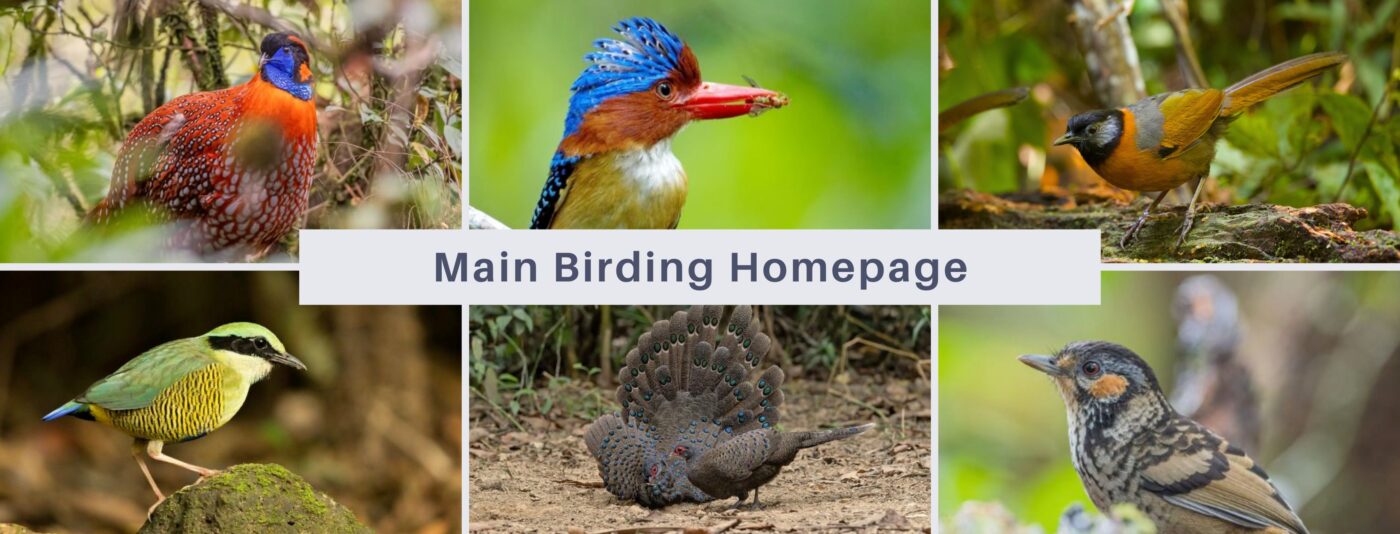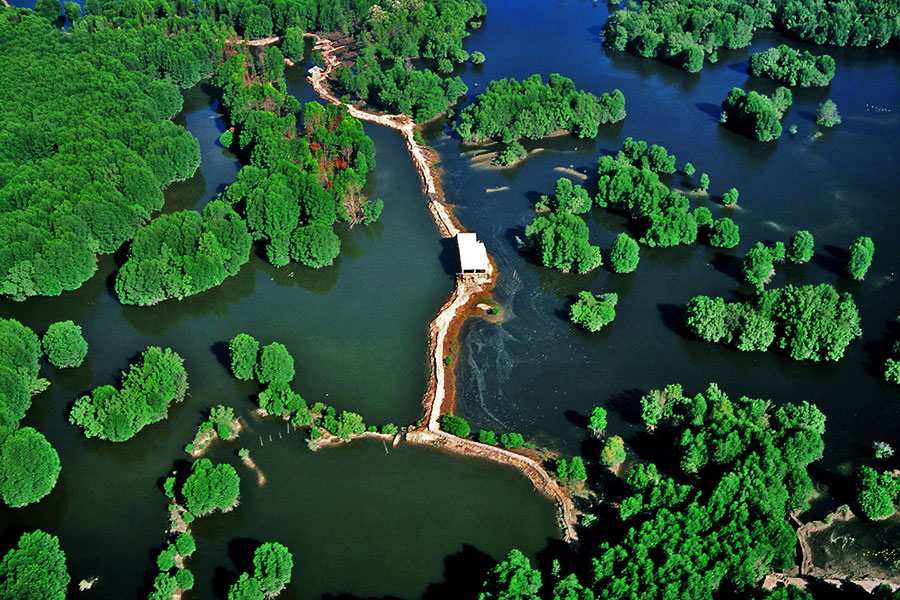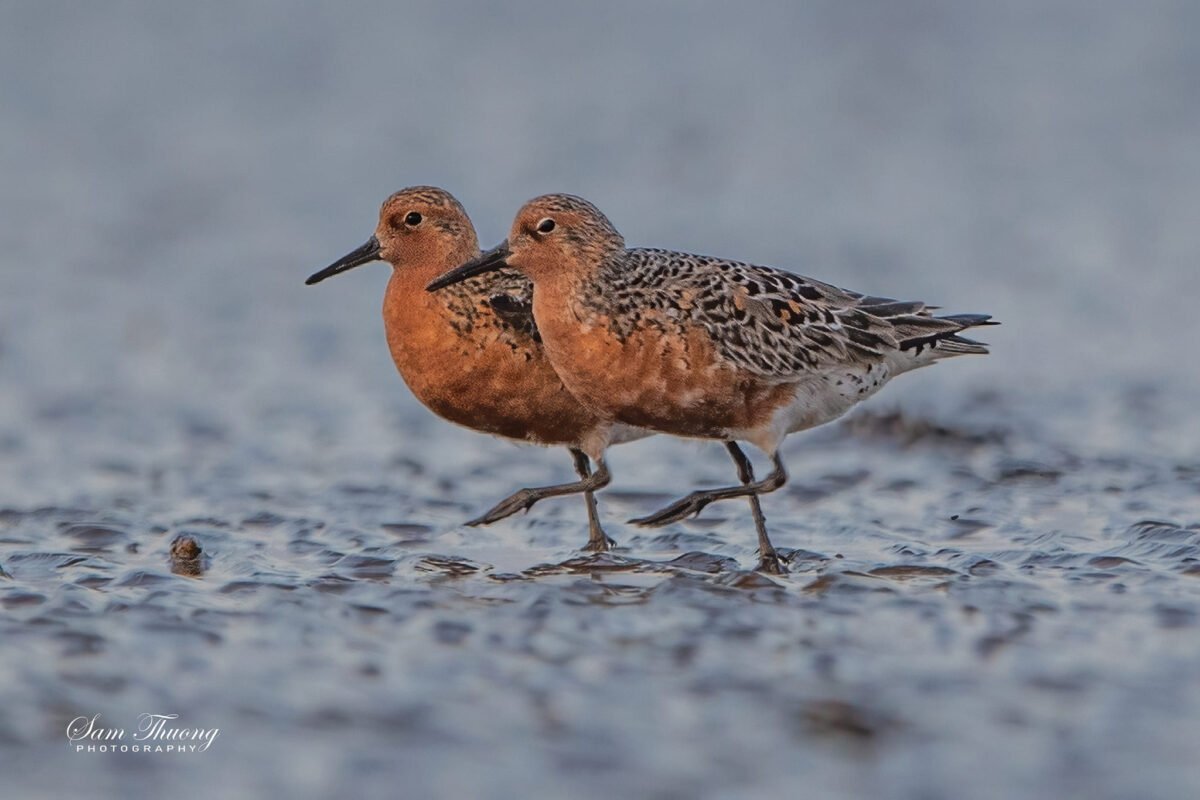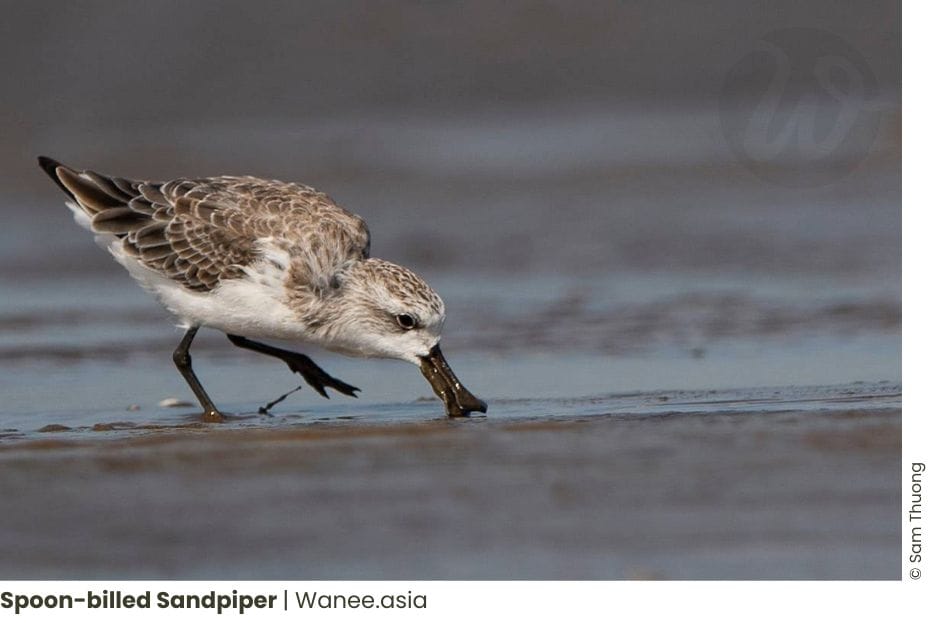Mudflats Habitat for Shorebirds in Vietnam stands as a crucial sanctuary for migratory birds, hosting diverse avian species throughout the year. This comprehensive guide highlights the optimal seasons for visiting, the five premier mudflats, and enticing birding tour opportunities.
Heading 1: The Significance of Mudflats
Mudflats: Nature’s Nutrient-Rich Buffet
Mudflats, the natural junctions of river and sea, are dynamic and essential ecosystems. Their formation is a dance with the tides, where sediments and nutrients accumulate as the river flows towards the ocean. These coastal gems harbor a rich tapestry of life, from mollusks and clams to the intriguing mudskipper and myriad crabs.
But their significance goes beyond this abundant array of marine life. These intertidal zones act as nature’s nutrient-rich buffet tables, fueled by the generous alluvial accretion carried by the river’s flow. As the tides ebb, they reveal a feast for migratory shorebirds, including worms, clams, crabs, and the captivating mudskipper.
This coastal bounty offers a crucial stopover for these avian travelers, providing the sustenance needed for their long and challenging migrations. In this intricate dance between land and water, mudflats prove to be linchpins in the coastal ecosystem, demonstrating the profound interdependence of life in these fascinating habitats.

Mudflats: Ebb and Flow of Life
The allure of mudflats lies in their ever-shifting nature, intricately connected to the rhythmic dance of the tides. As the tides rise and fall, these estuarine wonderlands transform, unveiling their treasures to the world. During high tide, they appear as serene coastal expanses, seemingly devoid of life. Yet, as the tide retreats, the mudflat awakens with life, exposed and ready to offer its nourishment.
Shorebirds, nature’s intrepid travelers, understand the secret of mudflats. They time their migrations to coincide with the low tides, a spectacular spectacle where these unassuming landscapes teem with activity. The mudflat’s nutrient-rich mud becomes a stage for a grand feast, hosting an impressive assembly of mollusks and invertebrates, like crabs and worms. In this intricate choreography of life, shorebirds, mudflats, and tides come together in harmony, demonstrating nature’s ceaseless ebb and flow.
Heading 2: The Best Time to Visit Mudflats Habitat for Shorebirds
The Precise Timing: A Shorebird’s Gastronomic Feast
In the meticulous realm of shorebird migration, a scientific narrative unfolds. Researchers unveil the precise temporal orchestration of this phenomenon, revealing that the shores come alive from late October to early April. During this period, shorebirds, long-haul travelers of nature, enact a sequence of events that is a testament to their millennia-honed instincts.
Navigating Perilous Journeys: Shorebirds in Flight
The migratory journeys undertaken by shorebirds are epic odysseys punctuated by extreme adversities. Post-breeding in distant locales, they resort to mudflats as critical layovers. This strategic arrival hinges on a precise synchrony with changing tides. Via rigorous scientific scrutiny, researchers meticulously track the avian nomads’ migratory pathways, emphasizing the pivotal role of mudflats in these remarkable journeys.
The Vital Energy Recharge: Mudflats and Weight Loss
The mudflats serve as a sanctuary for the revival of shorebirds. After enduring demanding long-distance flights, these avian travelers land at a nutrition-rich oasis. Scientific observations have documented that shorebirds undergo dramatic reductions in body weight—up to 50%—during migration. Their arrival at mudflats signifies a time-sensitive process, where replenishing depleted energy reserves is of utmost urgency for the impending breeding season.
Survival Strategies: Navigating Changing Climates
Meticulous scientists examine the intricacies of each stage in the shorebirds’ migration. Mudflats assume the role of an indispensable refuge, particularly in the context of shifting climatic conditions. As northern habitats become increasingly hostile, the timing of southern migration corresponds to alterations in the natural world. Researchers employ their scientific acumen to decipher the impacts of these climate-driven changes on shorebirds and the ecosystems upon which they rely.
The Puzzle of Endurance: Unraveling Shorebird Mysteries
In their pursuit of understanding the shorebirds and their dynamic relationship with mudflats, researchers delve into the intricate puzzle of endurance. Mudflats represent a domain where the precision of nature aligns with scientific exploration, providing essential insights into the ecological equilibrium within the avian realm. A comprehensive grasp of the nuanced dynamics of this remarkable buffet and its associated chronology unlocks the mysteries surrounding these extraordinary avian athletes.

Heading 3: 5 Mudflats for Shorebirds in Vietnam
Can Gio Mangrove and Mudflat
The Can Gio Mangrove and Mudflat, located within the Biosphere Reserve, serves as a vital habitat for numerous bird species, especially shorebirds. This unique ecosystem primarily consists of mangrove forests and mudflats, providing abundant mollusks, making it a prime location for shorebirds’ feeding grounds.
Approximately 194 bird species have been recorded at this site, showcasing the incredible avian diversity of the mudflats. These species include the critically endangered Spoon-billed Sandpiper, as well as a wide array of plovers, sandpipers, and other shorebirds. The presence of these birds underscores the importance of mudflats as critical stopover points during their migrations, as they fuel up on the rich resources of the mudflats.
Many of the species found here are rare or threatened, emphasizing the need to protect and conserve this essential habitat. The Can Gio Mangrove and Mudflat represent a significant stronghold for shorebirds in Vietnam, making it a valuable site for birdwatchers and conservationists alike.

You can read more about Can Gio Biosphere Reserve:
Tan Thanh – Go Cong Mudflat
The Tan Thanh – Go Cong Mudflat, a prominent wetland site in Vietnam, boasts a rich avian diversity with approximately 408 bird species recorded. This exceptional habitat includes mudflats, making it a prime feeding ground for shorebirds.
Among the notable bird species, the Black-bellied Plover, Pacific Golden-Plover, River Lapwing, Red-wattled Lapwing, and a variety of plovers and sandpipers thrive in this ecosystem. One of the highlight species is the critically endangered Spoon-billed Sandpiper, emphasizing the ecological significance of this location for conservation efforts.
These mudflats serve as crucial stopover points for migratory birds, allowing them to replenish their energy reserves during long journeys. The presence of such a diverse range of shorebirds underscores the importance of preserving this vital habitat, ensuring the survival of these remarkable bird species, including the Spoon-billed Sandpiper.

Binh Dai and Ba Tri – Ben Tre Clams Mudflat Field
The Binh Dai and Ba Tri – Ben Tre area, nestled in the heart of southern Vietnam, stands as a beacon of avian diversity, boasting an impressive total of 376 bird species. This unique and vital habitat encompasses extensive mudflats, making it an indispensable feeding and stopover ground for a variety of shorebirds.
Among its renowned avian inhabitants, you’ll find the critically endangered Spoon-billed Sandpiper, Pacific Golden-Plover, and a rich tapestry of sandpipers, plovers, and other shorebirds. These birds, including the Little Ringed Plover, Ruddy Turnstone, Great Knot, Broad-billed Sandpiper, Curlew Sandpiper, Sanderling, Dunlin, Terek Sandpiper, and Nordmann’s Greenshank, rely on this area as a critical refuge during their taxing migrations.
The presence of the critically endangered Spoon-billed Sandpiper emphasizes the area’s ecological importance in conserving these unique and threatened bird species. Preserving this precious habitat is pivotal to ensure the survival and protection of these remarkable avian residents.
Ca Mau Cape
Ca Mau Cape, a coastal gem in southern Vietnam, stands as a sanctuary for avian enthusiasts, hosting an impressive 366 bird species. Its rich tapestry of habitats includes expansive mudflats, mangrove forests, and a mosaic of ecosystems, making it a vital feeding and stopover site for countless shorebirds.
This pristine area boasts a significant number of bird species, from the majestic Black-winged Stilt to the unique Oriental Plover and numerous sandpipers, plovers, and other shorebirds. The critically endangered Spoon-billed Sandpiper, a rare and remarkable species, is also known to frequent this region.

Among these avian residents are threatened bird species such as the Little Ringed Plover, Ruddy Turnstone, Great Knot, Broad-billed Sandpiper, Curlew Sandpiper, Sanderling, Dunlin, Terek Sandpiper, and Nordmann’s Greenshank. They depend on this region for their arduous migrations.
Ca Mau Cape’s significance lies in its role as a critical stronghold for these birds, providing refuge and sustenance as they traverse their incredible long-distance journeys. Protecting this pristine habitat is essential to secure the future of these remarkable avian residents and ensure their continued survival.
Vinh Chau Mudflat
Vinh Chau in Soc Trang, Vietnam, is a haven for bird enthusiasts, offering a diverse range of habitats that support 81 bird species. Among the numerous avian residents, several captivating species stand out, including the elegant Eurasian Curlew, the striking Black-tailed Godwit, the elusive Bar-tailed Godwit, the charming Broad-billed Sandpiper, and the majestic Spot-billed Pelican.
The wetlands of Vinh Chau are crucial for these magnificent birds, providing essential foraging and resting areas during their migrations. These habitats not only serve as vital stopover sites but also offer a safe refuge for a variety of bird species, contributing to the rich avian diversity of this region.
The protection and preservation of Vinh Chau’s wetlands are essential to ensure the continued survival of these remarkable birds and to maintain the ecological balance of this unique habitat. It is a place where nature thrives and visitors are inspired by the wondrous beauty of the avian world.
Birding Tours in Mudflats Habitat for Shorebirds
[1-Day] Birding Tours in Ho Chi Minh City – Discover Can Gio Mangrove Forest

Duration: 1 Day
Unveil the avian wonders of Ho Chi Minh City with our exhilarating 1-day birding tour in the Can Gio Mangrove Forest. Located within the Can Gio Biosphere Reserve, this unique habitat is home to a myriad of bird species. Notably, it’s a hotspot for the Spoon-billed Sandpiper, a critically endangered shorebird. Our guided tour offers a fantastic opportunity to observe these magnificent birds in their natural habitat. With the assistance of local guides, you’ll traverse through the mangrove’s enchanting landscapes, gaining insights into both the ecosystem and the birds that thrive here. Don’t miss this extraordinary day of birdwatching right on the doorstep of Ho Chi Minh City!
[1-Day] Birding Tour around Ho Chi Minh City – Special for Spoon-billed Sandpiper

Duration: 1 Day
Embark on a memorable 1-day birding tour around Ho Chi Minh City, specifically tailored to uncover the enigmatic Spoon-billed Sandpiper. Journey to the renowned Go Cong Mudflat, a prime location for this critically endangered species. This avian adventure offers a unique opportunity to witness these elegant shorebirds in action. Our local birding experts will guide you through this exceptional ecosystem, providing you with unmatched insights into the world of the Spoon-billed Sandpiper and other remarkable bird species. This is your chance to support conservation efforts and create unforgettable birdwatching memories in the vicinity of Ho Chi Minh City.
Heading 5: Additional Information about Shorebirds and Conservation
Shorebirds play a vital role in the ecosystem, but they face various threats in Vietnam, including habitat degradation and the widespread use of mist nets for bird capture. The mist nets, particularly prevalent in Batri and Go Cong, pose a significant risk to these birds, many of which are already endangered or threatened. Efforts to conserve these fragile populations are crucial.
One notable initiative is the “Mekong Shorebird Program,” where experts diligently collect data on the number of individuals within shorebird populations each year. This project not only provides valuable insights into the status of these birds but also aims to educate local communities about the harmful consequences of mist net usage. By promoting awareness and understanding, this program strives to protect shorebirds from capture and ensure their survival.
The conservation of shorebirds is of paramount importance in Vietnam, and efforts such as the “Mekong Shorebird Program” are essential for their continued well-being. These initiatives not only help in safeguarding these precious avian species but also contribute to the overall health and balance of the ecosystem.
Dalat Plateau Birding Herping and Wildlife Tours
The Dalat Plateau, rising 2,000 meters above sea level, is one of Vietnam’s most important [...]
Cat Tien National Park Birding Herping and Wildlife Tours
Cat Tien National Park tours offer an unforgettable experience with sightings of Germain’s Peacock Pheasant, [...]
Western Black Crested Gibbon – Nomascus concolor
Nestled within the verdant landscapes of Vietnam, the Western Black Crested Gibbon (Nomascus concolor) emerges [...]
Northern White-cheeked Gibbon – Nomascus leucogenys
The northern white-cheeked gibbon (Nomascus leucogenys) is a Critically Endangered gibbon species indigenous to South [...]
Northern Yellow-cheeked Crested Gibbon – Nomascus annamensis
The Northern Yellow-Cheeked Crested Gibbon, or Nomascus annamensis, is an exclusive primate species found in [...]
Eastern Black Crested Gibbon – “Cao-vit Gibbon” – Nomascus nasutus
Nestled within the dense, emerald-green forests of Vietnam, the Eastern Black Crested Gibbon (Nomascus nasutus), [...]